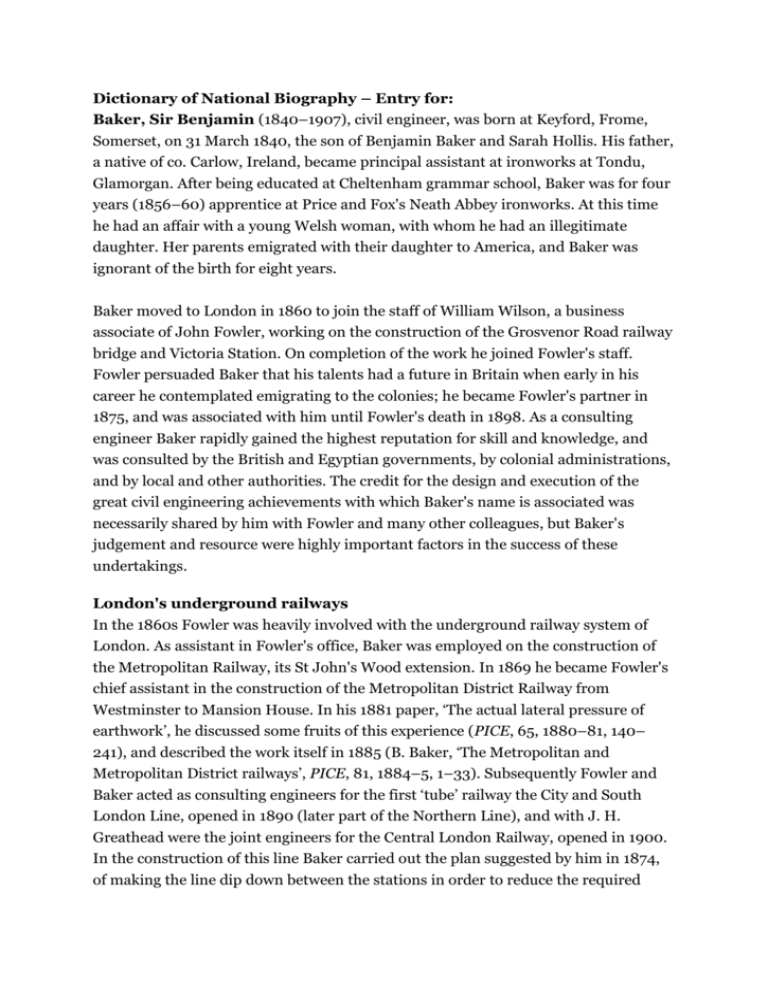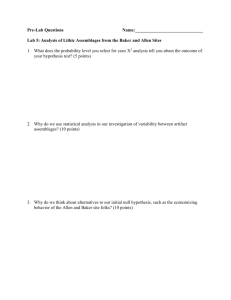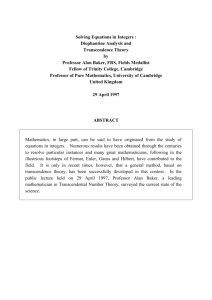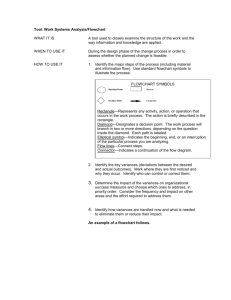
Dictionary of National Biography – Entry for:
Baker, Sir Benjamin (1840–1907), civil engineer, was born at Keyford, Frome,
Somerset, on 31 March 1840, the son of Benjamin Baker and Sarah Hollis. His father,
a native of co. Carlow, Ireland, became principal assistant at ironworks at Tondu,
Glamorgan. After being educated at Cheltenham grammar school, Baker was for four
years (1856–60) apprentice at Price and Fox's Neath Abbey ironworks. At this time
he had an affair with a young Welsh woman, with whom he had an illegitimate
daughter. Her parents emigrated with their daughter to America, and Baker was
ignorant of the birth for eight years.
Baker moved to London in 1860 to join the staff of William Wilson, a business
associate of John Fowler, working on the construction of the Grosvenor Road railway
bridge and Victoria Station. On completion of the work he joined Fowler's staff.
Fowler persuaded Baker that his talents had a future in Britain when early in his
career he contemplated emigrating to the colonies; he became Fowler's partner in
1875, and was associated with him until Fowler's death in 1898. As a consulting
engineer Baker rapidly gained the highest reputation for skill and knowledge, and
was consulted by the British and Egyptian governments, by colonial administrations,
and by local and other authorities. The credit for the design and execution of the
great civil engineering achievements with which Baker's name is associated was
necessarily shared by him with Fowler and many other colleagues, but Baker's
judgement and resource were highly important factors in the success of these
undertakings.
London's underground railways
In the 1860s Fowler was heavily involved with the underground railway system of
London. As assistant in Fowler's office, Baker was employed on the construction of
the Metropolitan Railway, its St John's Wood extension. In 1869 he became Fowler's
chief assistant in the construction of the Metropolitan District Railway from
Westminster to Mansion House. In his 1881 paper, ‘The actual lateral pressure of
earthwork’, he discussed some fruits of this experience (PICE, 65, 1880–81, 140–
241), and described the work itself in 1885 (B. Baker, ‘The Metropolitan and
Metropolitan District railways’, PICE, 81, 1884–5, 1–33). Subsequently Fowler and
Baker acted as consulting engineers for the first ‘tube’ railway the City and South
London Line, opened in 1890 (later part of the Northern Line), and with J. H.
Greathead were the joint engineers for the Central London Railway, opened in 1900.
In the construction of this line Baker carried out the plan suggested by him in 1874,
of making the line dip down between the stations in order to reduce the required
tractive effort. This subsequently became standard practice on tube railways. After
Greathead's death in 1896 Baker also acted as joint engineer with W. R. Galbraith for
the Baker Street and Waterloo (Bakerloo) Railway . Almost his last act before his
death was to attend the opening of the Euston–Angel extension of the City and South
London Railway; Basil Mott and David Hay were his partners in work on this project.
The Forth Bridge
In the early years of his career Baker began to study structural theory and the
strength of materials. For Engineering he wrote a series of articles on long span
bridges in 1867, and another, on the strength of beams, columns, and arches, in
1868. Both series were published in book form, as was his paper on the lateral
pressure of earthwork. A third series, on the strength of brickwork, was written in
1872. These publications established Baker's international reputation, and were
extensively abstracted and translated. In the work on long span bridges, published at
a time when Fowler's practice was actively considering a major crossing of the
Severn, Baker concluded that the longest span could be achieved using cantilevers
supporting an independent girder. This system was finally adopted for the Forth
railway bridge. To his early training in the Neath Abbey ironworks he owed the
foundation of his thorough knowledge of the properties and strength of metals, on
which he wrote many papers. Baker's technical writings displayed a rare ability to
illustrate engineering principles in a way which even a lay audience could
understand. This was seen, for example, in his illustration of the cantilever principle
by a human model in his lectures on the Forth railway bridge. This specialist
knowledge enabled him to play a principal part in association with Fowler in the
design of the Forth Bridge. This, the longest span bridge in the world at the time, was
begun in 1883 and completed in 1890. Baker worked almost continuously on site,
carrying out numerous tests on the steelwork and research into wind pressure. His
services were rewarded by the honour of KCMG (17 April 1890) and the prix Poncelet
of the Institut de France. The success of the bridge paved the way for the widespread
use of structural steel.
Egypt and the Aswan Dam
From 1869 Baker was also associated with Fowler in investigating and advising upon
engineering projects in Egypt. One of these was for a railway between Wadi Halfa
and Shendi and a ship incline at Aswan, and another was a project for a sweet-water
canal between Alexandria and Cairo, which was never built.
For the remainder of his life Baker played a prominent part in the engineering work
which distinguished British involvement in Egypt in the late nineteenth and early
twentieth centuries. He was consulted by the Egyptian government on various
occasions on the repair of the Nile delta barrage and when, after several years'
investigation, schemes were prepared by Sir William Willcocks in 1894 for the
storage of the waters of the Nile for irrigation purposes, Baker was appointed to the
commission which approved the project for a reservoir at Aswan and chose a site for
the dam. To meet objections to the partial submergence by this plan of the temples at
Philae, the height of the proposed dam was reduced from 85 to 65 feet. The work, for
which Baker was consulting engineer, was begun in 1898 and was completed in 1902,
when Baker was made KCB and was appointed to the order of the Mejidiye. The dam
was 6400 feet in length, pierced by 180 sluice openings at different levels. Baker was
also consulting engineer for a subsidiary dam which was built at the same time at
Asyut, below Aswan. When the contractors, John Aird & Sons, had this work well in
hand, with a large part of their contract time to run, Baker, realizing the advantages
of early completion of the dam, advised the Egyptian government to cancel the
contract and to instruct the contractors to finish the work at the earliest possible
moment, regardless of cost, leaving the question of contractors' profit to be settled by
him. His advice was followed, the work was completed a year early, and the value of
the extra year's supply of water was estimated to be £600,000. The Aswan Reservoir
was from the first found to be inadequate to meet demand and as no suitable site
could be found for another reservoir above the site, it was decided to raise the dam
there to about the height originally proposed by Willcocks. Baker solved the difficult
problem of uniting new to old masonry so as to form a solid structure by building the
upper portion of the dam as an independent structure which could be united to the
lower by grouting with cement when it had ceased to settle and contract. Just before
his death he went to Egypt to settle the plans for this work (completed in 1912), as
well as preliminary plans for a bridge across the Nile at Bulaq.
Other works
Smaller but important works which Baker also undertook included: the vessel which
he designed with John Dixon in 1877 to transport Cleopatra's Needle from Egypt to
England, a project which first brought his name to the notice of the general public
(‘Cleopatra's Needle’, PICE, 61.233); the Chignecto Rhip Railway, for which Fowler
and Baker were consulting engineers, commenced in 1888 and abandoned in 1891
owing to financial difficulties; the Avonmouth docks (in association with Sir John
Wolfe Barry, 1902–8); the Rosslare and Waterford Railway; the widening of the
Buccleuch Dock entrance at Barrow; and the construction of the bascule bridges at
Walney (Barrow in Furness) and across the Swale near Queenborough.
Baker gave much professional advice on structures at home and abroad. He advised
on three important works of Thomas Telford—the Menai Bridge, Buildwas Bridge,
and Over Bridge at Gloucester—doing much to ensure their survival. He acted as
consultant with Allan Duncan Stewart (1831–1894), who had earlier assisted in the
Forth railway bridge design, on the Wembley Tower project, conceived as the tallest
structure in the world but soon abandoned. When the roof of Charing Cross railway
station collapsed on 5 December 1905 he at once examined it, at some personal
danger, and gave useful advice. He had earlier been consulted by Captain J. B. Eads
in connection with the design of the St Louis Bridge across the Mississippi (1868)
and in regard to the first Hudson river tunnel when the latter faced failure, he
designed a pneumatic shield which enabled the work to be completed (1888–91). His
fame as a bridge engineer led to him acting jointly with Fowler as consultant to
Schneider and Hersent's scheme for a cross-channel railway bridge. Nowhere were
his abilities appreciated more highly than in Canada and the United States. He was
an honorary member of both the Canadian and the American Societies of Civil
Engineers and of the American Society of Mechanical Engineers.
Government service
Baker served from 1888 until his death on the ordnance committee, of which he
became the senior civil member on the death of Sir Frederick Bramwell in 1903. He
was active in many government inquiries and regularly gave evidence on
parliamentary bills. He was a member of the committee on light railways in 1895,
and of the committee appointed by the Board of Trade in 1900 to inquire into the
loss of strength in steel rails. To the London county council he reported in 1891, with
Alexander Binnie, on the main drainage of London, and in 1897, with George
Frederick Deacon, on the supply of water to London from Wales. On Fowler's death
in 1898 he retained many of Sir John's consultancies, maintaining the office at 2
Queen Square Place, Westminster, under the name of Baker and Hurtzig. His
partner, Arthur Dameron Hurtzig, continued the practice after Baker's death. In
addition Baker had a partnership with Frederick Shelford, acting as consultants to
the crown agents.
Baker was elected an associate of the Institution of Civil Engineers in 1867, a
member in 1877, a member of council in 1882, and president in 1895, remaining on
the council until his death. During his presidency the council was enlarged to give the
membership overseas and outside London better representation and the system of
election was modified. Baker was a major influence on the foundation of the
Engineering Standards Committee, forerunner of the British Standards Institution,
by ICE and the other leading engineering institutions. He helped draft the first
British standards relating to bridges and building construction. He became a fellow
of the Royal Society in 1890 and a member of its council in 1892–3, and was one of
its vice-presidents from 1896 until his death.
Baker was president of the mechanical science section of the British Association at
Aberdeen in 1885. He was also active in the Royal Institution, in the Institution of
Mechanical Engineers (on the council of which he sat from 1899 until death), in the
Society of Arts, and in the Iron and Steel Institute. He was an associate of the
Institution of Naval Architects and an honorary associate of the Royal Institute of
British Architects. Honorary degrees were conferred upon him by the universities of
Cambridge (DSc, 1900), Edinburgh (LLD, 1890), and Dublin (MEng, 1892).
Baker died suddenly from syncope at his home, Bowden Green, Pangbourne, on 19
May 1907, and was buried at Idbury, near Chipping Norton. He was unmarried and
left the bulk of his estate to his sister, Mrs Fanny Maria Kemp, and her family.
A memorial window, designed by J. N. Comper, was unveiled by the earl of Cromer
on 3 October 1909 in the north aisle of the nave of Westminster Abbey.
W. F. Spear, rev. Mike Chrimes
Sources
Engineering, 83 (24 May 1907), 685–6 · PICE, 170 (1906–7), 377–83 · The Engineer, 103 (24 May
1907), 524 · L. T. C. Rolt, Great engineers (1962) · S. B. Hamilton, ‘Sir Benjamin Baker, with
particular reference to his contribution to the study of earth pressures’, Géotechnique, 8 (1958), 105–
12 · R. A. Paxton, ed., 100 years of the Forth Bridge (1990) · A. W. Skempton, ‘Landmarks in early soil
mechanics’, The measurement, selection, and use of design parameters in geotechnical engineering:
Seventh European Conference on Soil Mechanics and Foundation Engineering [Brighton 1979], 5
(1981), 1–26 · W. Westhofen, The Forth Bridge (1890) · The Times (20 May 1907)
Archives
ICL · Inst. CE, Baker and Hurtzig records; papers and drawings · NA Scot. · TNA: PRO | ICL, Unwin
MS, letters to W. C. Unwin · Mott MacDonald Consulting Engineers, London, MSS
Likenesses
Bassano, photographs · T. Fall, photograph, repro. in PICE, 117 (1893–4) · T. Fall, photograph, repro.
in Engineering · J. C. Michie, portrait, ICL, Department of Civil Engineering; replica, Inst. CE ·
engraving, Inst. CE · pastel drawing, Museum of London Transport
Wealth at death
£170,513 9s. 4d.: probate, 19 June 1907, CGPLA Eng. & Wales
© Oxford University Press 2004–15
All rights reserved: see legal notice
W. F. Spear, ‘Baker, Sir Benjamin (1840–1907)’, rev. Mike Chrimes, Oxford
Dictionary of National Biography, Oxford University Press, 2004; online edn, Jan
2008 [http://www.oxforddnb.com/view/article/30545, accessed 22 Sept 2015]
Sir Benjamin Baker (1840–1907): doi:10.1093/ref:odnb/30545
[Previous version of this biography available here: September 2004]








